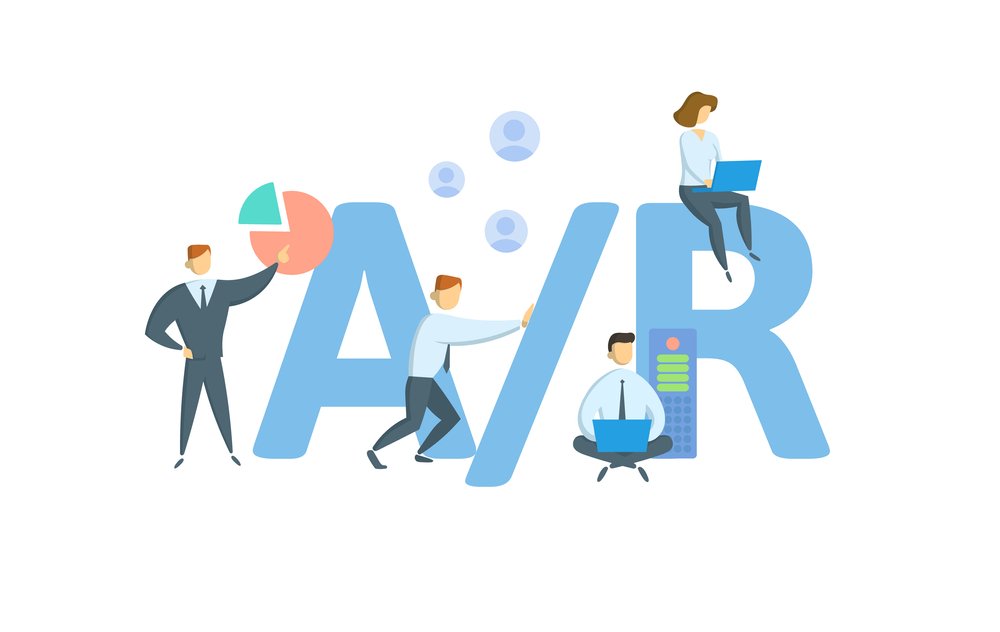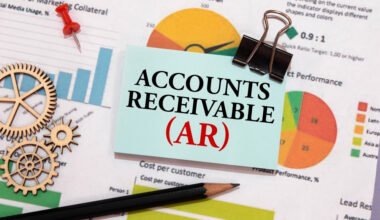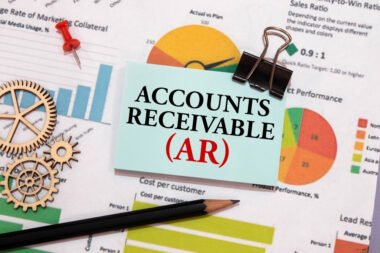Every business needs a swift and concise way of A/R management to ensure their profits are not locked up in non-paying accounts. The more one feels compelled to run after accounts, the more time and energy leeches off actual profit and success. Don’t let yourself get bogged down by chaos; learn how to streamline your A/R. So, if you ask what AR management is, we are here to guide you through the entire process and understand it in detail. Read along and discover the secrets of AR.

The Big Question – What is Accounts Receivable Management?
Your accounts receivable is the outstanding or remaining amount customers owe you in exchange for goods or services rendered to them. If there are payments that are yet in the pipeline, they will affect your yearly revenue and profits, and that is why all the amount owed to you by customers can amount to quite a lot of money that will go a long way toward your profit. Every business novice and veteran needs to know how to manage accounts receivable.
What Is the Difference Between Accounts Receivable and Payable?
Another important thing to distinguish here is that a company will owe payments to vendors or other companies and have customers owe them something. When a company owes money to someone, that is called accounts payable, where it is liable for payment to some other entity, whereas accounts receivable is the money the customers owe the company.
This give and take is the real exchange of profits and losses that you must keep a close eye on. If you want to know how to manage accounts payable and receivable, you need a strong accounting management system that can streamline all these details for you to optimize your cash flow in and out of the company. But coming back to AR management, here is what you need to know about that.
The Nitty Gritty of A/R
Navigating A/R is a tricky process that requires quite a lot of practice and trial and error. To ensure that you have a handle on the functions, you need someone in charge who will have a steady grasp of A/R intricacies and who can determine which parts of your accounts processing need attention and resources. Usually, a company has an accounts officer who keeps track of these changes and implements strategies. That brings us to the first question:
What Does an Accounts Receivable Manager Do?
An account receivable manager is responsible for the cash flow of the company. They are the gatekeepers of the money rolling into the business by clients, and it is up to them to see how to maximize it. They will devise and implement strategies to help the company recover the amounts owed to them by customers to increase profits.
If your accounts receivable are not optimized and adequately streamlined, you will see the consequences weighing in quickly. Most businesses don’t even realize they are suffering because of A/R until it’s too late, so you need to know who will handle your A/R and how it will be handled. So that begs the second question:
How Do You Manage Accounts Receivable?
- To start a consistent A/R process, you need a few things aligned with your business needs. So, the first thing you need to do is to determine what those needs are. Once you know what process must be streamlined, you can decide what tools you need.
- The tools usually include an AR account receivable management software that suits your AR processing needs. If you need to monitor the delinquent accounts closely, you should get software that deals with late payment automation. If there is an issue with compiling and organizing your claims, look for one that can do that for you.
- After that, you must ensure that your software has streamlined tasks like invoice generation, payment reminders, account activity, and correspondence. By doing so, the software will provide a preview of the A/R process, and it’ll be easier to determine if there is a lag of some sort.
- If you receive a high volume of claims, you can organize them according to the debtor’s intent. You can determine which accounts can be cleared quickly and fast and jump on those first. And the ones that will give you trouble, you need to keep a close eye on them to see if they’re becoming delinquent.
- For delinquent accounts, you need to establish a collections policy. If there is an indication that you will have to chase an account and it will not pay, set up a collections policy that determines the escalation of an account to collections after the initial efforts for pre-collection.
- You need to manage your KPIs (Key Point Indicators) like Days Sales Outstanding, and aging reports to know when accounts are about to become trouble and give you a hard time and get ahead of that as soon as possible.
- Ensure you have excellent customer service support, as the most important thing for your business is brand reputation, and bad reviews are business suicide. You need to be vigilant of customer support and ensure it functions well.
- Keep options open for litigation as a last resort for accounts that consistently refuse to pay and implement a strategy for legal action if you need to use it.
The Role of Management in AR Processing – How to Better Manage Accounts Receivable
While there are multiple ways that you can make collections, it is essential to stay compliant in your process. Debtors already have the stress of debt on them; the last thing they need is more push and shove from collectors trying to collect outstanding payments. You need a steady and clear accounts receivable management strategy to avoid that. It is up to the management to organize their internal processes such that they can get a handle on outstanding payments and rake in their AR earnings.
The first thing to consider when managing AR is how to mitigate any issues that might come your way. How can management speed up accounts receivable when it comes to setbacks? The best way would be to have a contingency plan when things might go south. Management must have a vantage point for issues that might crop up in AR processing and ways to speed things up.
- Management can set up regular analytics and reporting on accounts to record every progress or failure and analyze it properly.
- There should be a quality control system where every claim in processing has been through the procedures necessary to recover payments – invoicing, reminders, and more.
As the claims come in, an influx of information needs to be organized and put into one place. To ensure this process is seamless, managers must tightly grasp the fluctuations. They need to know how to evaluate and manage accounts receivable risks. You need to manage accounts promptly, and you can take a few steps to do that:
- Management can reconcile the accounts frequently and regularly to ensure that bank statements, payment receipts, and everything else are aligned, adequately documented, and recorded.
- Having clear credit policies is essential. Before extending credit to a customer, managers must check their creditworthiness to avoid miscommunications later.
- Regularly update and check customer contracts to ensure proper following of terms and conditions so there are no discrepancies.
What Are the Benefits and Importance of Accounts Receivable Management
If you are taking adequate measures to settle your A/R and ensure everything is going smoothly, you must have a system in place. And that system should accurately measure how you are helping your AR processes improve. That leads to the question, are there any benefits to accounts receivable management? Yes, there are. You need to know how your AR is performing; otherwise, the leaks could happen again, and you won’t know what hit you. There are adequate benefits to measuring your A/R, and here they are.
Ensuring steady working capital:
If a business has solid A/R management processes in the works, it can invest its current capital in exciting and engaging business ventures. When opportunities come knocking, you won’t have to think twice before investing in or exploring those options; that is what every business aspires to do.
Improved cashflow:
One even manages A/R in the first place to enable a steady and good cash flow. You have a stable investment policy when you collect your AR efficiently, and there is less doubt about the capability of your business to expand and grow as it can. With improved cash flow, your systems will run better and can scale according to the possibilities that are open to you when they do.
Improved customer relationships:
A thriving business is the dream of any businessperson, and you can achieve that when you have enduring relationships with your customers. With a streamlined A/R, you have lasting customer relationships and less conflict to deal with.
Keep your Business Thriving with Streamlined A/R with Last Demand
So, there you have it, an A to Z understanding of how AR management works and the steps one must take to manage it. Now that you know this, you can focus on the most critical aspect: the automation of your AR processes.
For this purpose, Last Demand is your best option. As a revolutionary and efficient SaaS solution for automating AR, it is your ideal choice for automation. It carries all the features you need to seamlessly integrate and automate AR processes.
You can customize it to your needs for the best first-party collection experience. Go ahead and invest in Last Demand to find the solution to the A/R problem you have wanted all this time.







